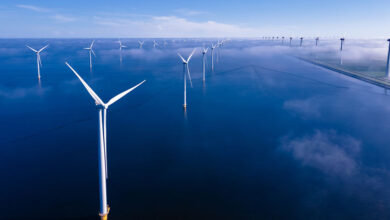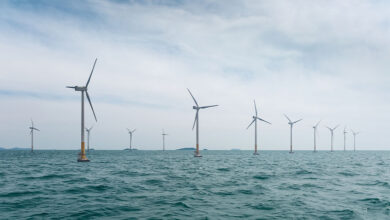Integrating electricity markets
 Electricity markets expert David Newbery talks to Owen McQuade about the integration of European markets and the impact on the Irish Single Electricity Market (SEM).
Electricity markets expert David Newbery talks to Owen McQuade about the integration of European markets and the impact on the Irish Single Electricity Market (SEM).
David Newbery is Emeritus Professor of Economics at the University of Cambridge and a research fellow at Imperial College London, specialising in electricity markets. Being an independent member of the Irish Single Electricity Market Committee and having been an advisor to the UK House of Commons on electricity market reform, he is well placed to highlight the issues in integrating the Irish and GB electricity markets. With the European Target Model the integration is the final phase of the European Single Electricity Market which is to be completed by 2014. However, Ireland has a derogation until 2016, reflecting the complexities of integrating two different forms of market.
You have looked at the coupling of the UK and Netherlands electricity markets. What are the advantages of coupling markets?
The main benefits are you have potentially access to cheaper sources of electricity or, alternatively, you can have a market into which you can sell your cheaper electricity: the usual market advantages, which can be quite large as the price differences between electricity markets can be quite significant.
In the long run, will market prices balance out?
Not always. With the Scotland-Northern Ireland interconnector, the flow has been one-way and that can create problems. If the cheaper country is always exporting, that can raise prices and the consumers may get cross. That was the case between Norway and the Netherlands but then Norway had a severe drought and desperately needed to import power. That was a good example where both markets benefit.
Looking to the future, what if a large part of the market becomes supported i.e. subsidies for new technologies, renewables, CCS and nuclear?
The crucial thing is: “Is the plant at the margin high or low cost?” If you have a huge amount of wind, and you are even spilling wind and the price goes to zero, or even negative, then that is a problem. If you have CCS or biomass, those are high costs. If you have balancing actions to do with wind, that can also have a high cost, and if you are interconnected with a market with a significant price, that may set the price. I think it may be a problem in the late 2020s and not until then.
You have said that the EU Emissions Trading Scheme has been a failure. Why?
The major impact has been the economic downturn. The renewables support removed a significant part of the market and caused the prices to come down but that pales into insignificance when compared to the impact of the depression in Europe.
How would the future introduction of nodal pricing affect European electricity markets?
That is less of a problem in the SEM but in Europe it is very difficult to define the capacities between countries because it depends on the pattern of generation and demand within countries, which is opaque at the moment. With nodal pricing, it becomes clearer and you can make full use of the transmission system. Indeed, Poland is very upset because they have to wheel power from northern Europe down into southern Germany and they are keen on nodal pricing.
The EU electricity market integration is hugely ambitious. What do you see as the difficulties?
In a sense, we have a rather strange market design where we say the price of electricity in an hour is constant and in the next hour it is very different, potentially. In Britain, if the price across the border switches, we have potentially an 8GW swing which is happening at the change of the hour and I am not sure how well the algorithm for coupling these markets is designed to deal with that. There are a lot of things to be thought through as to whether the market design they are trying to impose on these things governed by the laws of physics is actually reflecting those laws.





